Choosing The Right ShampooBy Liesa Goins
Reviewed by Mohiba Tareen, MD WebMD Magazine - Feature Staring at an aisle of shampoo bottles is enough to get anyone into a lather. But the words on the labels are backed up by science. The bottom line is that "most shampoos are basically cleansing agents, thickeners, preservatives, and humectants," says Ni'Kita Wilson. She's the CEO of Catalyst Cosmetic Development in Union, N.J. You need the right combination to make a formula that's precisely right for your hair. We asked shampoo chemists for a guide to the best options depending on your hair type. Normal Some people have the Goldilocks of locks -- a just-right balance of oiliness and dryness that isn't too fine or frizzy. If that's you, you need a fairly even ratio of conditioning agents and detergents, Wilson says. You may have to hunt a bit. "You won't find a lot of 'normal' shampoos these days, because brands create versions for specific hair types," says Perry Romanowski, an independent cosmetic chemist in Chicago. Oily An excess of sebum or heavy, waxy styling products can leave a greasy residue that requires a clarifying formula to remove. "These tend to have salicylic acid to break down gunk left on the hair and scalp," Wilson says. The ingredients list should be shorter (because you don't want to deposit anything else on your hair), and you want detergents like sulfates to remove dirt and oils. Fine The key to fattening up skinny strands is to look for polymers like the "quats" (polyquaternium 7 or 10), which can make hair look and feel thicker, Romanowski says. Wilson says fine hair will feel bulkier with shampoos that have film-formers, such as hydrolyzed wheat protein and PG-propyl silanetriol. These increase the diameter of the hair shaft. "You also want to avoid silicones, which can feel heavy on fine textures," Romanowski says. Frizzy or Curly To tame an unruly mane, you need high levels of conditioning agents for smoothness and moisture. In this case, new products called cleansing conditioners offer that blend of benefits. "A cleansing conditioner is basically a conditioner with a little bit of mild surfactants to help lift dirt," Wilson says. These offer high levels of moisture and gently cleanse to keep the hair cuticle smooth and fight fly-aways. Dry, Damaged, or Chemically Treated Whether your scalp naturally makes less sebum or you have dehydrated strands caused by heat damage or a chemical process, you need a moisturizing formula. The best options deposit ingredients to make brittle hair feel more supple. Ingredients like dimethicone and cyclomethicone provide the softness and shine that make hair look healthier, Romanowski says. Higher levels of conditioning agents like a polyquaternium, guar hydroxypropyltrimonium chloride, or hydroxyethyl dimonium chloride seal down the cuticle to make your hair smoother and more manageable, Wilson says. Source: Webmd.com www.masaakii.com Hair Care From 30 to 59: Ask the Hair Health SpecialistsStylist Jim Shaw and dermatologist Nicole Rogers, MD, discuss changing hair care and needs through different stages of life, from pregnancy to menopause. Question: For the last year or so, when I wash my hair I can barely get all the shampoo out and my hair gets really stiff. I use more high-end products for my hair. What could the problem be? Answer: Jim Shaw, stylist: You might be using products that have too much protein in them. This can cause your hair to feel dry and make the products hard to rinse out. Or, if you are swimming a lot, the difficulty may be due to chlorine buildup in your hair from the pool water. Question: If I don't wash my hair for one day, it becomes too oily the following day. But it gets too dry when I wash it every day. What is your advice for maintaining a good balance of oil in my hair? Answer: Shaw: Wash your hair daily and use sulfate-free shampoos. They won't dry out your hair and will help preserve your natural oils. Question: I am 58, although people always tell me I look like I'm in my 40's. I have very thin hair and a round face. What would be my best length of hair to maintain to complement my face? Answer: Shaw: It sounds like you need to keep doing what you're doing. As you age, the shape of your face is an important factor when you're thinking about what hairstyles to wear. I would guess that a stacked and layered bob would suit your face shape and be easy to maintain. Question: What kind of hair styles would be good for a woman in her late 50s with a rounder face? Answer: Shaw: As we age, it's a good practice for most people to wear hairstyles that draw attention to the eye area. So I recommend seeing a professional stylist who would know this and help you pick a style that works for you. Question: What kinds of hair products could help add volume to my baby-fine hair? Answer: Shaw: To add volume to fine hair, I like to use root boosters and a tousling spray wax to style. These products are great for adding thickness to the look of your hair. Question: My hair is so oily. Are there any shampoos that work best for really oily hair? Answer: Shaw: In my shop, we use our cleansing shampoos to strip excess oil from a client's hair and scalp. Question: I went gray at an early age. I have very thick hair that also grows really fast. Right now I'm wearing a shorter style with longer, stacked hair in the back. A lot of people think I wear a wig because I have so much volume. Besides using that putty-looking stuff to weight it down, what else would you recommend I do to my hair so it doesn't sit up and stick out so much? Answer: Shaw: I recommend using a straightening iron to style your hair, rather than curling it. Straighter styles are great for reducing volume and making unruly strands behave. Question: I'm allergic to PPD. What can I use to color my grays? Are there any hair color products that don't contain PPD? Answer: Shaw: Yes. There are hair color products that don't contain PPD. Do your research online for products that come in the colors you like and that fit your price point. Question: Ever since my 42nd birthday my hair constantly breaks off. What can I do about it? Answer: Shaw: I see this a lot in my clients once they reach your age-range, especially breakage around the hairline. As we age, our bodies change. And so does our hair. So we have to make revisions in how we care for it. Try to use less heat to style the areas of your hair that are more delicate than others areas. And use a detangling spray to help detangle your hair more easily when it's wet. Question: I am a 43-year-old woman. I used to get relaxers, but I cut all my hair off to get rid of the relaxed strands and go natural. But my natural texture is more kinky than curly. What kind of products can I use to make it curly? I've also started having a lot more dandruff since I cut it. Why might that be? Answer: Shaw: I recommend that you use oils for your hair that are designed to loosen the tightness of your natural curls, but still allow you hair to remain curly. Dr. Nicole Rogers: It sounds like you may have seborrheic dermatitis, which is an oily scalp/skin condition that can sometimes be associated with a pityrosporum yeast. It's usually resolved with a shampoo that contains ketoconazole, selenium sulfide, or zinc pyrithione. Question: I am a 52-year-old woman. I went for a hair appointment recently and my stylist discovered a bald spot in my hair that's about the size of a dime. What could this be? Should I be concerned? Answer: Rogers: Most likely you have what is called alopecia areata, which is an autoimmune form of hair loss that affects 3% to 5% of the population. The bare patch of hair will often regrow on its own. But you may be able to speed up the regrowth by seeing your dermatologist for topical or locally injected steroid treatments. Question: I've seen advertisements for a laser hair growth system on TV and on the Internet, and I'm considering purchasing it. Do those kinds of hair loss treatments really work? Answer: Rogers: There is some data to suggest that these lasers may help increase the caliber, or width of your existing hairs. However, the data is still limited and it has yet to be demonstrated in any large, independent trials. Question: I'm 50 years old. In the past five years my hair growth has become very uneven. I have thin, short hair on the left side, the length varies on the right, and it's very thin and short in the middle of my head. Why might this be happening? Answer: Rogers: I recommend seeing a dermatologist to find out exactly what is going on. Question: Can eating pumpkin and sunflower seeds benefit my hair health and growth in any way? Answer: Rogers: There is some basic research and data that suggest that the phytosterols -- including beta-sitosterol that is found in pumpkin seeds -- can block the conversion of testosterone to dihydrotestosterone (DHT). Less DHT theoretically means less hair follicle miniaturization. However, no formal clinical trials have been performed to demonstrate the effectiveness of ingesting phytosterols to promote hair health or growth. Question: Is there something I can do to stop my hair from turning white so early and so fast? I'm only 33 years old! Answer: Rogers: Early graying of the hair is often something that runs in families. You probably can't do much to prevent this. A diet high in antioxidant foods, such as green tea, dark berries, and fish that are high in omega-3 fatty acids, may make a slight difference. Question: I have psoriasis of the scalp. I've seen different dermatologists and, for the most part, they always recommend the same solution -- an oily scalp treatment that has to be used every night. But the treatment is so oily that I have to wear a shower cap to bed, which gives me headaches. Plus the cap slides off during the night and I awake with the treatment all over my pillow, my face … everywhere. I've also tried other treatments -- including topical creams, light therapy, and steroid injections -- and nothing has made a permanent difference. Are there any new treatments on the horizon for scalp psoriasis, preferably something that would be more effective than what I've already tried and that won't require everyday use? Answer: Rogers: The next step for you is most likely a systemic treatment. Often doctors start their patients on oral methotrexate, a drug that has been around for many years and offers significant improvement. However, if you have a history of hepatitis or liver disease, this may not be an option. Newer "biologic" treatments such as etanercept can be injected into the muscle once or twice a week for prolonged remission. Talk with your dermatologist about all available options. You may need to seek out someone who has special expertise in the treatment of psoriasis. Question: I'm 33 years old, and for the past few months my hair has thinned considerably. I've always had fine, wavy hair, but a lot of it. I used to need a big round brush or a paddle brush to blow dry my hair, and I had to do it in sections. Lately, all I need is a comb. I haven't changed my diet, exercise routine, medications, or main hair products. But I have been under a lot of stress. Could that be the cause of my thinner hair? I'm so upset about it! Answer: Rogers: The workup of hair loss can be extensive. You may want to see your primary doctor for basic blood work such as thyroid, ferritin (iron stores), or auto-immune testing. If these tests produce no noteworthy results, a scalp exam by your dermatologist should be next to determine whether you need a biopsy or not to gain even more information. The most common cause of gradually thinning hair in both genders is male and female pattern hair loss. So examine your relatives for any clues as to whether you may have inherited this condition. Question: Now that I'm in my 40's, why does my scalp become so much drier after I shampoo it? Answer: Rogers: As we age, the sebum production in our skin and our scalp declines. This can be a welcoming change for some -- less shampooing, less acne, or less seborrheic dermatitis. But the dryness is the tradeoff. Some patients apply scalp moisturizers such as tea tree or olive oils to help relieve the dryness. Question: Can taking glipizide for diabetes cause hair loss? Answer: Rogers: Hair loss is not listed as a common side effect for glipizide. However, you may be having an idiosyncratic reaction. With your doctor's guidance, you can see if stopping the drug for six to12 months will allow the hair to regrow. Question: I'm a 51-year-old man and my hair has been the same length for nearly 10 years! What could be wrong? Answer: Rogers: You may have something called short anagen syndrome, which means that the hair stays in the actively growing phase for a shorter time. The end result is that it never gets longer than a genetically determined length. Question: Ever since my 50th birthday the texture of my hair has changed. I've used curling irons and flat irons in the past. But now when I use them, my hair looks more brittle than it used to. Could the problem be hormonal? Answer: Rogers: As we age, there is less sebum production in the scalp, which means there is less oil produced to coat and protect the hair cuticle. Ultimately, this makes the hair shaft less resilient to the damaging and drying effects of curling irons and flat irons. Question: Do a lot of people lose their hair from taking warfarin? Answer: Rogers: Alopecia is a possible side effect of taking warfarin, although we don't have exact statistics demonstrating what percentage of patients suffer from this. Question: What actually causes gray hair? Why hasn't a cure been invented? Answer: Rogers: Gray hair results from the loss of functional melanocytes in the bulb of the hair. These are the pigment-producing cells, which transfer pigment granules to the actively growing anagen hairs. It can occur gradually as we age, or sooner in life for some genetically predisposed individuals. The very complex machinery of the hair follicle is the reason we have not yet found a cure. Question: Two months ago I suffered a concussion from a direct blow to the top of my head. Along with the lump that hasn't gone away, my hair is falling out in that spot. Why is this happening? What can I do? Answer: Rogers: It sounds like your hair follicles were just as traumatized as your skin. It's likely that they have entered a resting telogen phase prematurely. The area will likely regrow hair in a matter of three to six months. You may apply some over-the-counter topical minoxidil to the site to speed up the regrowth. Question: I've tried so many different shampoos and conditioners, and I always end up with a dry, itchy scalp. My hair is thin and naturally curly. What can I use to get rid of the dry scalp? Answer: Rogers: It may be worth a visit to the dermatologist to be sure you are not suffering from another form of itchy scalp such as psoriasis or seborrheic dermatitis (dandruff). You may need topical steroids or a prescription shampoo to better treat your dry scalp. In the meantime, be sure you are not taking very hot showers -- which leech the natural oils out of your scalp -- or using your hair dryer on too hot a setting. Question: Is petroleum jelly a good product to use for oiling your scalp? Why or why not? Answer: Rogers: Petroleum jelly is used successfully by many African-Americans to help smooth their hair and lock moisture into the scalp. People who should NOT use petroleum jelly on their scalps are those who already have oily scalp, as is seen in cases of seborrheic dermatitis. Source: Webmd.com by Masaakii Hair Growth: 7 Natural Tips to Make Your Hair Grow FasterWith the monsoons right round the corner, it is time you start paying a little more attention to your hair. Get rid of those expensive, chemical leached hair products, and say hello to natural remedies. There’s nothing like making the most of what nature has to offer. Our hair is made up of a protein called keratin that is produced in the hair follicles. As follicles produce new hair cells, old cells are being pushed out through the surface of the skin at the rate of about six inches a year. The hair that you can see is actually a string of dead keratin cells. An interesting fact is that an average adult has about 100,000 to 150,000 hair strands and loses up to 100 of them a day. Therefore, finding a few stray hairs on your hairbrush is not necessarily a cause for alarm. Initially, hair loss was seen as a sign of ageing, but in the urban scenario with everyone leading a hectic lifestyle, it has become a reason for worry for many. There are various causes for hair loss, ranging from medication, hormonal imbalance, the kind of diet you consume work stress. As a habit, we all look for an instant chemical remedy for hair loss for quick results despite being aware of its many harmful consequences. Going natural is the best solution for hair problems, since it doesn’t have any side effects and its results are long lasting. Here’s bringing you seven easy and effective home remedies for hair loss. Most of the ingredients for these quick fixes are available in your own kitchen! The Magic of Nature 1. Onion Juice – This remedy is regarded as one of most effective and oldest ones. The reason behind is that it contains sulphur that boosts collagen production in the tissues and helps in the re-growth of hair. Don’t let its strong smell keep you away from using it, because it goes off just after one rinse. To try this remedy, cut a few slices of onion and squeeze out its juice (either by mashing it or grating it) and apply it on your scalp for about 10-15 minutes. Let it work its magic and then rinse it off with a mild shampoo. Quick tip: You can substitute this with potato juice as well. Do you Suffer From Falling Hair Nightmares? 2. Coconut Milk - According to Dr. Blossom Kochhar, Chairperson, Blossom Kochhar Group of Companies, the most effective remedy for natural hair growth is the use of coconut milk because it is rich in iron, potassium and essential fats. Her remedy, “takecoconut milk from a fresh coconut (do not purchase the coconut milk - take it out meticulously from a fresh coconut). To it add half a squeeze of lemon, 4 drops of essential lavender oil. Mix it thoroughly and apply it on your scalp, leave it on for 4-5 hours and then rinse it off.” 3. Apple Cider Vinegar – This vinegar gently cleanses the scalp and maintains the pH balance of the hair thereby accelerating hair growth. Start for making a diluted solution by mixing 75ml of it in one litre of water for a larger batch or 15 ml of it to a cup of warm filtered water for a smaller batch. To apply this solution, use it as a final rinse after washing your hair. This will also give your hair an added shine and boost hair growth. 4. Make your Own Egg Mask – This home remedy is used all over the world for quick and natural hair growth. As we know, eggs contain high levels of proteins which help in the formation of new hair. It is also rich in sulphur, zinc, iron, selenium, phosphorous and iodine. For the egg mask, separate one egg white in a bowl and add one teaspoon of olive oil ( you can also use grape seed oil or lavender oil )and honey. Make a paste of it and apply it all over your hair and scalp for about 20 minutes. Rinse it off with cool water and some shampoo. Quick tip: Egg masks work wonders for a glowing and healthy skin. Fenugreek– This herb is also an age-old remedy for hair growth problems. It contains proteins and nicotinic acid; protein-enriched diets have been known to encourage stimulation of hair growth. Add a tablespoon of this herb and water in a grinder till a smooth paste it formed. Add a little coconut oil (or milk) to it and apply on your hair and scalp for half an hour. Wash it off with a mild shampoo. Not only will this remedy help you for hair growth but it will also protect the natural colour of your hair. 6. Green Tea – Now you have the perfect solution for those used tea bags that you throw away daily. Green tea, as you know is super rich in antioxidants and that helps in boosting hair growth and preventing hair loss. Apply warm green tea (from the used tea bags) over your scalp and leave it for an hour. Wash it off with cool water. 7. Indian Gooseberry (amla) – This magical fruit is a powerhouse of nutrients. It’s rich in Vitamin C and that accelerates hair growth. All you need to do is, mix 2 teaspoons of amlapowder or juice with equal amounts of lime juice and let it dry. Rinse it off with some warm water. It will also prevent hair pigmentation.
|
AuthorBy Masaakii Archives
May 2024
Categories
All
|
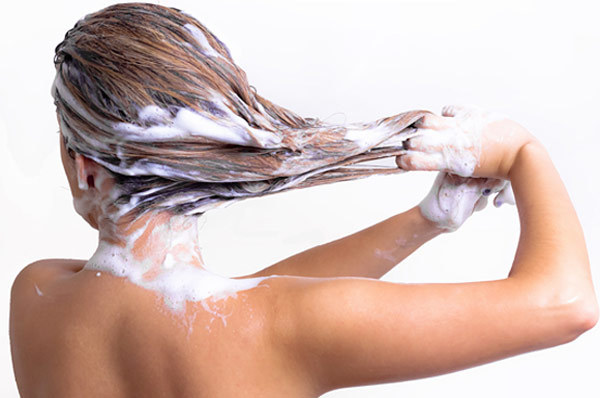


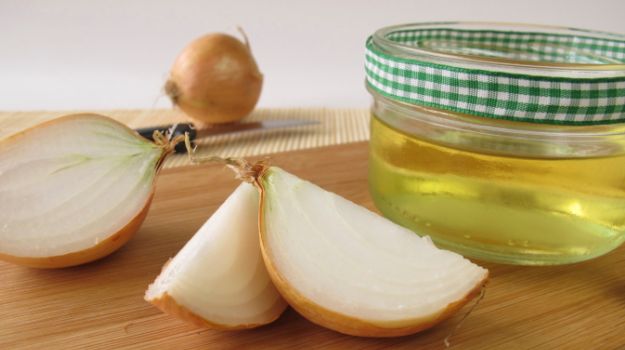
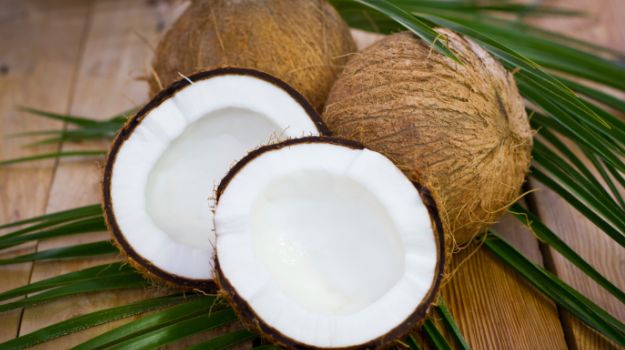

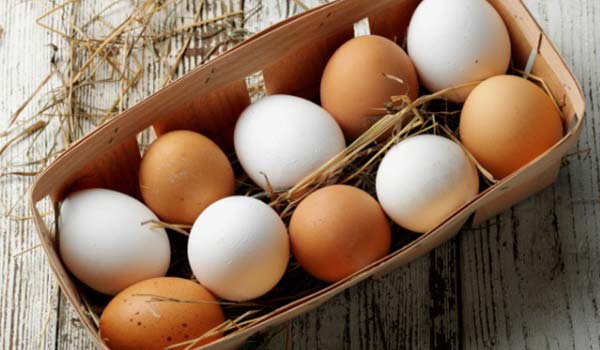
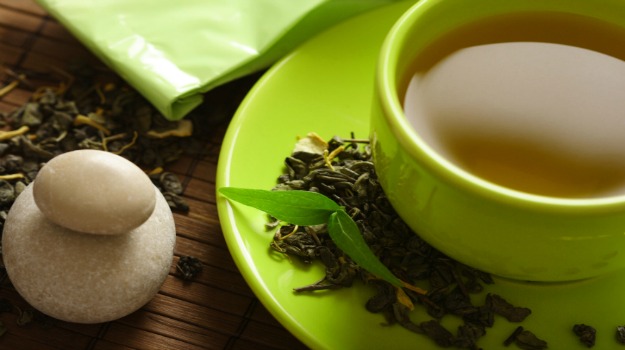

 RSS Feed
RSS Feed